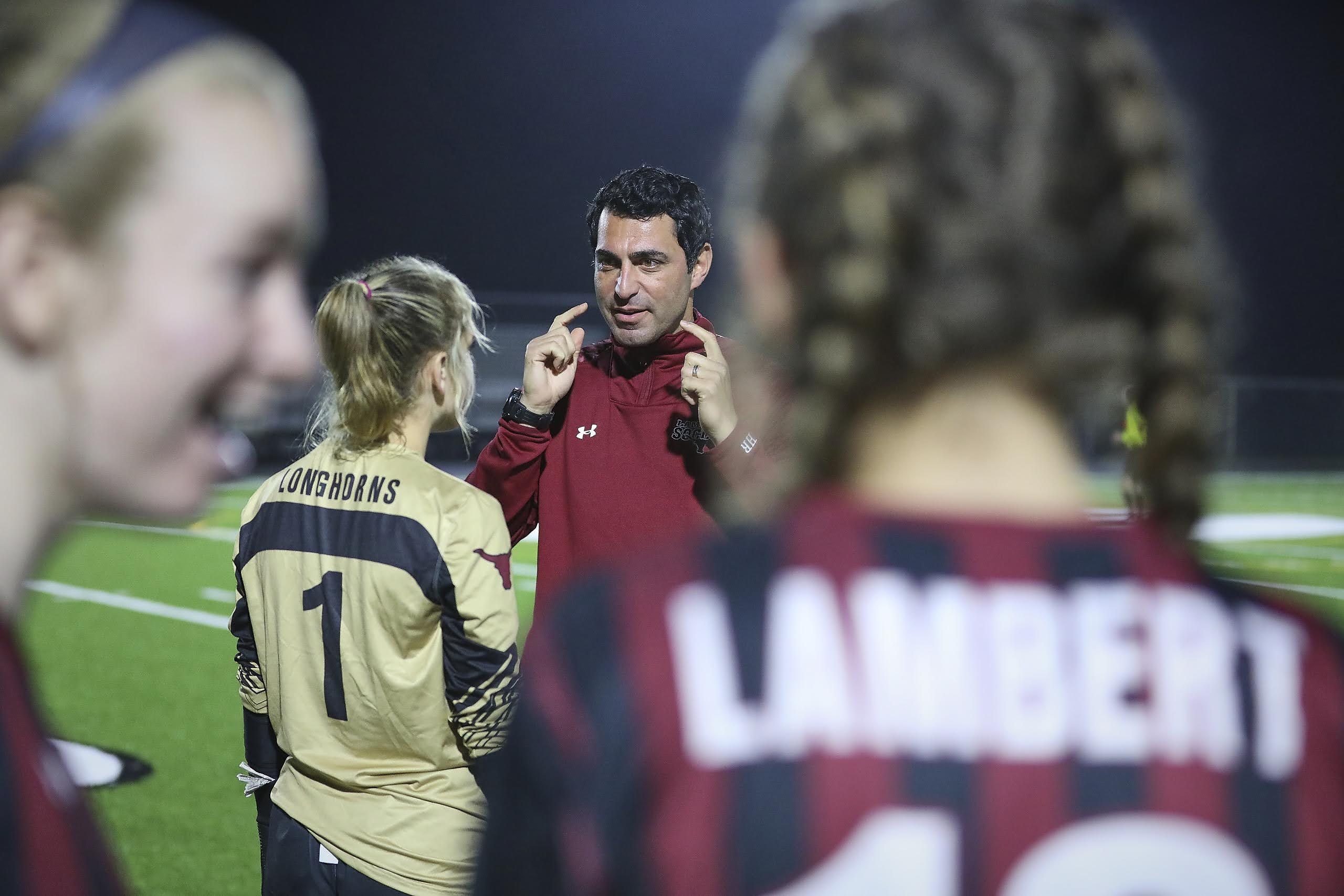Dr. Mark Allen
Child, Adolescent & Adult Psychiatrist, Northern Light Acadia Hospital
- In practice since 2014
- Completed his medical school and general psychiatry residency, University of Texas Health Science Center at San Antonio, a child psychiatry fellowship at New York-Presbyterian-Columbia & Cornell, and a post-fellowship year with the Canterbury District Health Board in Christchurch, New Zealand
- Peak Sports Psychiatry, PLLC
Watch our “Understanding the Mind of the 21st Century Athlete” webinar with Dr. Mark Allen.
<VIEW WEBINAR>>
The following is an excerpt from our recent “Understanding the Mind of the 21st Century Athlete” webinar.
So, why are coaches important? Coaches are the backbone of youth sports, serving as mentors, role models and inspiration for generations of young athletes. In fact, the Aspen Institute said “High school coaches are among the most important adults in the lives of students. They often spend more time with them than any teacher and can shape students’ ideas about health, education, ethics, personal responsibility and initiative to succeed in society.” In their national survey, one in three students said they play sports because of “a coach who cares about me.” The problem is as kids get older in high school, the perception of coaches has been dropping by grade and this is something we need to address.
First, let’s talk about the 20th Century mindset. Back in the day, we thought of “scoreboard.” You are better if you win a title, etc., but we were kind of losing sight of sports. Enter Gen Z and Alpha athletes. Kids these days need more coddling, more positive reinforcement; they are glued to their phones, don’t listen to music, love TikTok and watching other kids play video games, prone to move on to another team when the going gets tough and simply just not as interested in sports. Then you have the parents. They are disengaged; easily bored. They are also glued to their phone, helicopter-ish, view sports practice as babysitting, think their kids are going to go pro and have forgotten the value of athletics as a component of a healthy lifestyle. Then you add COVID-19. Seasons got cancelled, eligibility got ruined, rosters got constricted, but if anything, COVID redefined the purpose of sports participation for youth, high school and college athletes. Playing for themselves instead of for the crowd and/or for validation.
So, what can we do now? Sports should be part of the solution and a great unifier. So what is the goal of traditional sports participation? Becoming physically active. Being active can help with several different things: obesity, lower levels of depression, high self-esteem, lower health costs and greater productivity at work. Additionally, sports provide educational benefits. They help with cognitive skills and development, increase the likelihood of attending college and earning better grades, and even extend into the workplace, where a large amount of people say that athletics helped contribute to the success of their career. Other benefits include better mental health and overall personal development, such as self-esteem, goal setting and leadership. However, evidence indicates that the quality of coaching is a key factor in maximizing positive effects.
But why is live sports participation in a decline? In 2018, the NFHS reported a drop in sports participation for the first time in 30 years. In fact, the average child today spends less than three years playing a sport, quitting by the age of 11. The barriers that we see today include technology/e-gaming, loss of casual play, sport specialization, cost/travel, lack of access, untrained coaches and overall risk of injury.
So, what do kids say is most fun about playing sports? Overall, they want social bonds and access to the action. Some of the most fun reasons include trying your best, when coaches treat players with respect, getting playing time and playing together as a team. Some of the less fun reasons include winning, which is much less of a priority than simply having a chance to play, practicing with specialty trainers and coaches, earning medals and traveling to new places. I think we need to ask kids what they want and help them imagine.
So, what do kids want from a coach? They want a role model, someone who will be transparent with them about their role, be respectful and encouraging, and have clear and consistent communication. How do we address this and become this for our athletes? Here are a number of different ideas for you, their coach:
- Ask kids what they want. Create tools to evaluate program success based on factors such as fun, diversity, participation and retention rates, and the development of skills that foster physical behavior. Wins and losses shouldn’t be the prevailing metric.
- Reintroduce free play. Commit to providing recess. Kids can accumulate up to 40% of their total daily physical activity during recess.
- Encourage sports sampling. Bring back intramurals.
- Revitalize in-town leagues. Hire diversity officers to develop efforts to engage underserved kids.
- Think small. Support the occasional closing of downtown streets for cycling, 3-on-3 basketball tournaments and other community sports.
- Design for Development. Don’t cut kids. Add teams where possible by shrinking rosters.
- Train all coaches. Connect your athletes with youth programs and get them qualified to serve as assistant coaches. Kids respond to teens.
- Emphasize prevention. Recommend non-collision forms of play for 12-and-under kids.
What is the difference between a sports psychologist and a sports psychiatrist? A sports psychologist focuses primarily on performance enhancement using mental skills and motivational training. A sports psychiatrist has a clinical role and is focused on prevention, diagnosis and treatment of mental health concerns confronting athletes.
What are the invisible injuries that our athletes are facing today? Depression, anxiety, ADHD, substance abuse, sports-related concussions and eating disorders.
- Warning signs include sleep disturbance, loss of interest, loss of energy, loss of concentration, loss of appetite and suicidal ideation.
- Warning signs include increased heart rate, rate of breathing, sweating, feeling faint, narrowed or tunneled vision and depersonalization.
- Warning signs include lack of focus and concentration, argumentative attitude, frustration, lowered self-esteem and fluctuating emotions.
- Substance abuse. Most common substances include alcohol, caffeine, nicotine, cannabis and stimulants. *Use at a lower rate than the general population
- Today, concussions are happening more often because athletes are bigger, faster, stronger and playing more aggressively.
- Eating disorders. Affect every age, sex, gender, race, ethnicity and socioeconomic group. It’s not about food, but rather about control. Warning signs include excessive or compulsive exercise, sudden interest in “healthy eating,” weight that’s less than minimally normal, significant decrease in normal growth, fatigue and more.
In summary:
- Sports and athletics are a vital component to well-rounded youth development and the promotion of a healthy lifestyle.
- Childhood in the 21st century is much more complete and there are many competing interests and priorities.
- We need to bring the fun back into the game and get back to the basics of sport.
- Disengaged parents lead to disengaged, easily bored kids.
- Helicopter parents bugging you? Implement the 24-hour rule. Parents must wait 24 hours before contacting you.
- Coaches matter. Get to know your athletes and know the warning signs of “invisible injuries.”
Watch our “Understanding the Mind of the 21st Century Athlete” webinar now.
<VIEW WEBINAR>>


